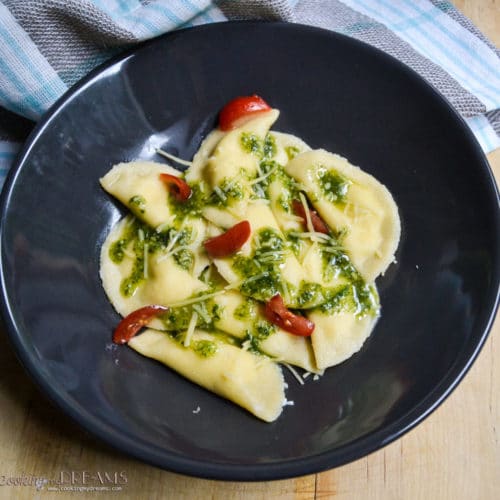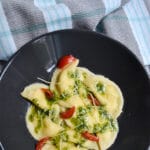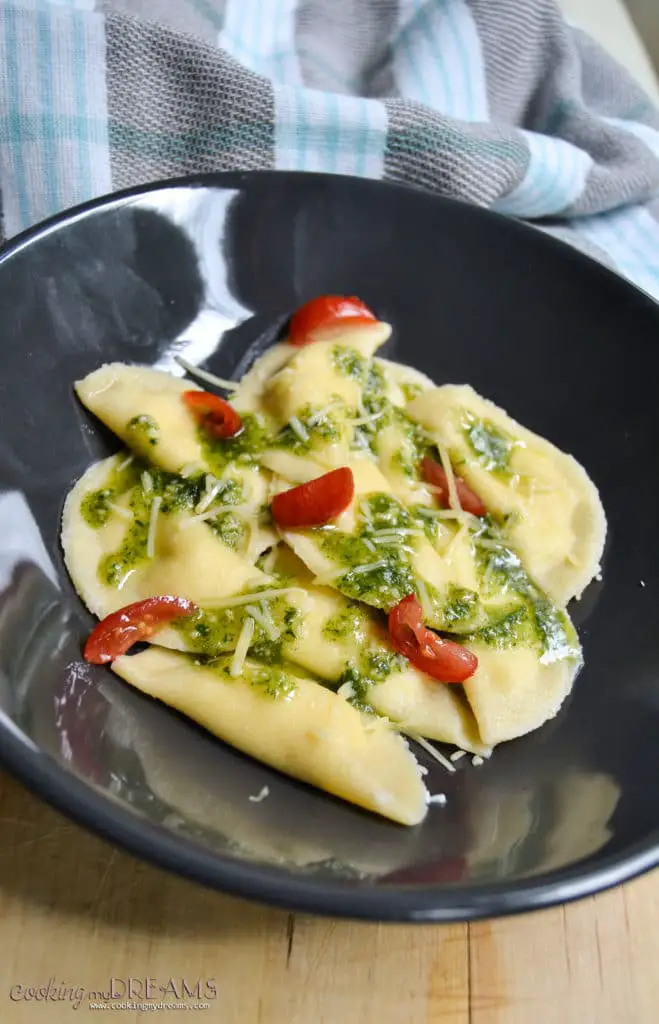
Most things in life happen casually, by chance. You don't know what your next steps are going to bring you, maybe you turn around a corner and bump into the love of your life, or you start casually talking with the person that will boost your career or you find in a cookbook the ingredient that will change your way to cook. Okay, the last one isn't so life changing but nethertheless I take joy in the small things in life.
I read about tarragon only by browsing Julia Child's book "The way to cook". She uses it in so many recipes but I've never heard of it before (we're talking about a few years ago, at the beginning of my culinary journey). In my family nobody ever used tarragon. The traditional recipes I knew never mentioned tarragon. Therefore, I became really curious and I wanted to try it, but I never saw it around before!
But, you know the say "you see only what you want to see". A few weeks later I was walking around the city center, and passing by a fruit&vegetable shop, I notice a huge sign on the door "Fresh Tarragon!". My jaw dropped, "it must be a sign!", I need to buy it! So, I bought it and cooked it. It was immediately love. Since then I use tarragon in so many recipes, I love it!
What is Tarragon?
Tarragon is a wild herb with long, thin, bright green leaves which grows in most parts of Europe, Asia and North America.
Its flavour is really aromatic and slightly reminds of anise. It pairs well with chicken, fish, eggs and practically everything else. It's one of the four "fines herbes" used in French cooking and you may know it as one of the main ingredients of the Béarnaise sauce.
It's so flavorful and unique that the famous chef James Beard said:
I believe that if ever I had to practice cannibalism, I might manage if there were enough tarragon around.
James Beard
What is Pecorino Cheese?
Contrarily to tarragon, Pecorino cheese is really popular in my area. The true Tuscan appetizer plate can never miss some Pecorino cheese in different aged varieties.
Pecorino is made from sheep's milk and from this derive its name (sheep in Italian is "Pecora" so Pecor-ino). There are many different types of Pecorino in every Italian region and they all have different flavours due to the different aging process and seasoning. Pecorino Romano is probably the most famous globally and it's mostly consumed aged and grated on pasta. The Tuscan one is quite mild, not too salty. The fresh one (my favourite) is usually within 20 to 60 days old; it has a soft and firm texture that melts in your mouth and it's delicious eaten simply with bread, either cold or melted.
The aged Pecorino comes in 2 main varieties "Semi-hard" and "Hard". The "Semi" one is aged for 4 months and usually has a red skin and is firmer than the fresh one but still not crumbly so it can be either eaten with honey and jams or grated on pasta, as in this recipe. While the one with black skin, is aged for 1 year and has a crumbly, very firm texture. Similarly to the semi, this one can also be eaten with honey and jams or grated. I don't like to eat hard crumbly cheeses, so I only use it grated. It's saltier than the other ones so it certainly goes very well with pasta.
Here you can buy the semi-hard Pecorino, similar to what I used for this recipe (affiliate link):
The Recipe
If you like this recipe, check also these other Ravioli recipes:
📖 RECIPE

Pecorino cheese Ravioli with Tarragon Pesto
Ingredients
For the Pasta
- 1 cup All Purpose Flour
- ¾ cup Semolina Flour
- 2 Eggs
- a pinch of Salt
For the Filling
- 3.5 oz Ricotta cheese
- ½ cup Pecorino Toscano cheese, grated
- Salt
- Black Pepper
- Ground Nutmeg
For the Tarragon Pesto
- 2-3 sprigs of Tarragon, about 15 g
- 2 tablespoon Pecorino Toscano cheese, grated
- 1 tablespoon Pine nuts
- Olive Oil
- Salt
- Black Pepper
- 5-6 Cherry Tomatoes
Instructions
Make the Pasta
- Start by making the pasta dough, mixing the flours with a pinch of salt in a large bowl or a large wooden cutting board. Make a hole in the center and drop the 2 eggs. Start whisking the eggs with a fork until it's too thick to whisk, then start kneading the dough with your hands and add more flour until you get a soft, elastic ball of dough that it's no longer sticky.
- Cover the dough in plastic wrap and set aside to rest for about 15 minutes. Make the filling by mixing the ricotta, the Pecorino cheese and season with salt, pepper and nutmeg. Set aside.
- Now roll the pasta dough into thin sheets, add the filling with a teaspoon in a small ball, being careful to leave enough space between them to be able to cut them out easily.
- Brush with water on the edges around the filling, then cover with another sheet of pasta and tap with your fingers to close them, making sure all the air gets out too.
- Cut the ravioli with a cutter, then press again the edges to make sure they're well sealed. Set aside on a clean towel to rest.
Make the Pesto
- To make the tarragon pesto, put in a blender the tarragon leaves with the pine nuts, Pecorino cheese, salt, black pepper and slowly add olive oil until you get a creamy pesto sauce (not too thick, not too liquid).
- Bring a large pot of salted water to boil, then gently toss the ravioli one by one. Cook for 2-3 minutes, then gently drain and serve with the tarragon pesto, a few chopped cherry tomatoes and some freshly grated Pecorino cheese.
Nutrition
Nutritional information is only an estimate. The accuracy of the nutritional information for any recipe on this site is not guaranteed.





Leave a Comment